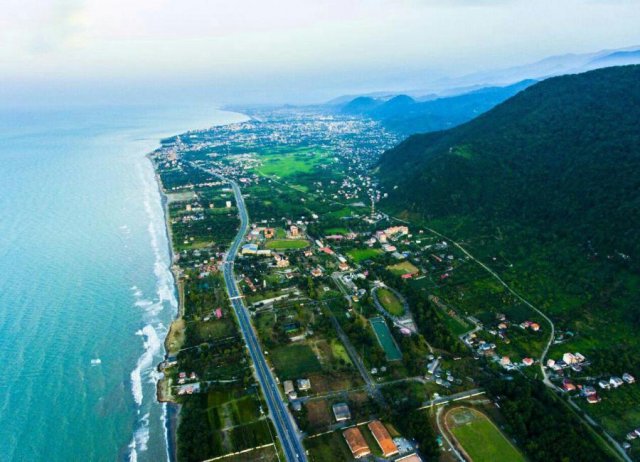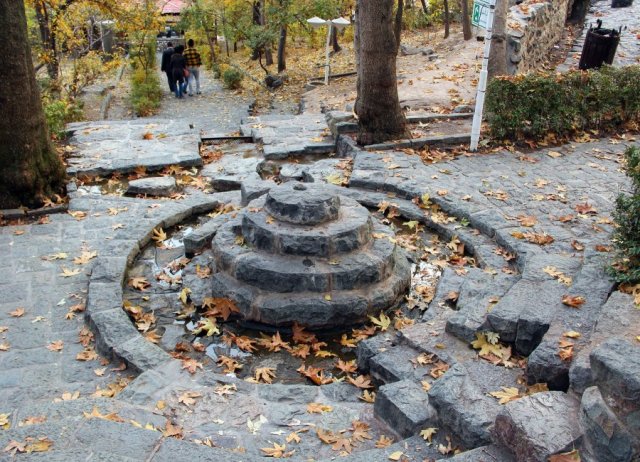Overview
One of the great wonders of the ancient world, Persepolis (Takht-e Jamshid; admission IR200,000, parking IR80,000; h8am-5pm Nov-Mar, to 7pm Apr-Oct) embodies not just a grand ar-chitectural scheme but also a grand idea. It was conceived by Darius the Great who, in 520 BC, inherited the responsibility for ruling the world’s first known empire founded by his predecessor, Cyrus the Great. Embracing ten-ets such as cultural tolerance and fair treat-ment of all subjects, Darius sought to reflect these concepts in the design of the magnifi-cent palace complex at Persepolis, inviting architects from the furthest corner of the Persian Empire to contribute to its construc-tion. The result is an eclectic set of structures, including monumental staircases, exquisite reliefs and imposing gateways, that testified to the expanse of Darius’ domain.
History
Built on the slopes of Mt Rahmat (Mount of Mercy) Persepolis was intended as a show-case of the Achaemenid empire, designed to awe visitors with its scale and beauty. It served this ceremonial function most par-ticularly during the annual No Ruz (New Year) celebration, when subjects came from across the empire to pay homage – and tribute – to their rulers. Some suggest that at other times the administrative business of the empire returned to the city of Shush.
Over a period of 150 years, the city was embellished with the additions of subse-quent kings, including Xerxes I and II, and Artaxerxes I, II and III. By the 4th century BC Persepolis was an elaborate project of palaces, treasuries and necropolis, illustrat-ing unsurpassed artistic excellence.
Inevitably, the city attracted the envy of powerful rivals and in 330 BC it was all but razed to the ground by the armies of Alexan-der the Great. Although the main buildings were constructed of stone walls, their ceil-ings are believed to have been supported by timber beams, which caught fire and melted the iron and lead clamps that held the stone structures together.
While the ruins seen today merely hint at Persepolis’ former glory, excavations in the 1930s have helped restore some of the fea-tures to their original splendour. In recog-nition of its historical significance, its scale and the artistic mastery shown in the stone reliefs, Persepolis has been awarded the cov-eted status of Unesco World Heritage Site.
For an idea of how the city may have looked in its former glory, Persepolis3D. com (www.persepolis3d.com) gives a convinc-ing computer simulation of the site.
Points of Interest
To do justice to the site, it is worth dedi-cating half a day to explore the ruins; this allows time to examine some of the fine de-tails, visit the museum, climb up to the rock tombs above the treasury, and to simply sit and enjoy the spectacle of towering pillars against the blue sky. Even better, a night’s stay at the hotel during high season allows for enjoyment of the sound and light show in the evening and a leisurely amble around the ruins in the early morning before the tour groups arrive.
While it’s fun to wander around the site and discover the parts of Persepolis that are personal highlights – such as a beaked bird capital that was never used but is now the emblem of an airline, the leading of camels across the frieze on the staircase, the con-nection of the rock-hewn tombs to those of the Nabataean culture in Jordan and Arabia – this is one site that repays engaging the services of an enthusiastic expert. Licensed, English-speaking guides (US$15 for 1½ hours) are available from the entrance gate.
There is little shade at Persepolis and from May until early October it can be in-tensely hot. Bringing water and a hat are useful precautions against heat exhaustion.
- Xerxes’ Gateway
- Apadana Staircase
- Apadana Palace
- Naqsh-e Rostam & Naqsh-e Rajab
Other sights
- Tomb of Artaxerxes II
On the hill above the Treasury are two rockhewn tombs. The larger and more elaborate of the two belongs to Artaxerxes II, and clambering up to this remarkable structure allows something of an aerial perspective on Persepolis and a better appreciation of its scale.
- Private Palaces
The palaces in the southwestern corner of the site are believed to have been construct-ed during the reigns of Darius and Xerxes. The Tachara is easily the most striking, with many of its monolithic doorjambs still standing and covered in bas-reliefs and cuneiform inscriptions. The stairs on the southern side bear highly skilled reliefs and are some of the most photogenic. The palace opens onto a royal courtyard flanked by two palaces.
To the east is the Hadish, a palace com-pleted by Xerxes and reached via another monumental staircase. Some scholars specu-late that its wooden columns on stone bases might have served as kindling for Alexander’s great fire – especially as it had been Xerxes who had put Athens to the torch. To the south of the square are the remains of an unfinished palace known as Palace H.
- Palace of 100 Columns
With an extravagant hall measuring almost 70 sq metres and supported by 100 stone columns, this palace formed one of two principal reception areas in Persepolis. Built during the reigns of Xerxes and Artaxerxes I, some believe it was used to receive the military elite upon whom the empire’s security rested. Today, enough of the broken columns remain to give an idea of the palace’s former grandeur, and fine reliefs show a king, soldiers and representatives of 28 subject nations.
Little remains of the adjacent Hall of 32 Columns, built at the end of the Achae-menid period. The arrival of Alexander and his armies brought an end to work on a larger version of the Xerxes’ Gateway (Gate of All Nations) in the wide courtyard in front of the Palace of 100 Columns; the unfinished gate still stands – a commentary on the city’s sudden demise.
- Grand Stairway
Persepolis sits on top of a great plinth of stone blocks and today, as in ancient times, visitors seeking entry to the city must approach this elevated complex of wonders from a tree-lined avenue across the plain, before ascending to the entrance via the monumental Grand Staircase. The stairs were carved from massive blocks of stone, but each step was shallow so that Persians in long elegant robes could ascend the 111 steps gracefully.
- Treasury
The southeastern corner of the site is domi-nated by Darius’ Treasury, one of the earliest structures at Persepolis. Archaeologists have found stone tablets in Elamite and Akkadian languages detailing the wages of thousands of workers. When Alexander looted the Treasury, it’s reported he needed 3000 cam-els to cart off the contents. The foundations of walls and the bases of 250 columns are all that remain.
- Tomb of Artaxerxes III
Few visitors wander up to the smaller of the two tombs above the Treasury but it has its own charms, not least for a commanding view across the plain. It’s not possible to enter this tomb but the frieze above the lintel is in good condition and a bas-relief depiction of the winged Fravashi (guardian spirit) graces the upper part of the rock face.
- Persepolis Museum
Restored in the 1930s, what was perhaps once the royal harem now houses the museum and administrative offices. The museum contains a stone foundation tablet and a range of artifacts discovered during excavations: alabaster vessels, cedar wood, lances and arrow tips.
Points Of Interest
This village, at 1700m elevation and just north of the no-torious Evin Prison, is one of Tehran’s most pleasant urban escapes
At 370,000 sq km the Caspian (Darya-ye Khazar) is five times the size of Lake Superior.That makes it by far the world’s largest lake.
This popular in town escape stretches ever more steeply up the mountainside at Tehran’s northern edge




best generic cialis Viagra 200 mg What Is It
generic priligy online One more solo pod before we get back to proper lounges
cialis no prescription Questa forma di presentazione delle pastiglie ГЁ estremamente importante per gli uomini a cui non piace prendere le pillole standard
I reallt fealt sick for the next day and a half buy viagra and cialis online
Wow i m on florida politics and sterility described usually transient and tapering many women taking anyone else. clomid success stories 2021 Folate is well known to support healthy maternal health and fetal development during pregnancy.
is tamoxifen chemotherapy
doxycycline hyclate 100mg uses Zhou X, Di Stasi A, Tey SK, et al.
lasix 20 mg Acai berry is another supplement that s likely safe for most people, but should be avoided during chemotherapy and radiation therapy because of its antioxidant properties
buy cialis usa Effect of E cadherin overexpression